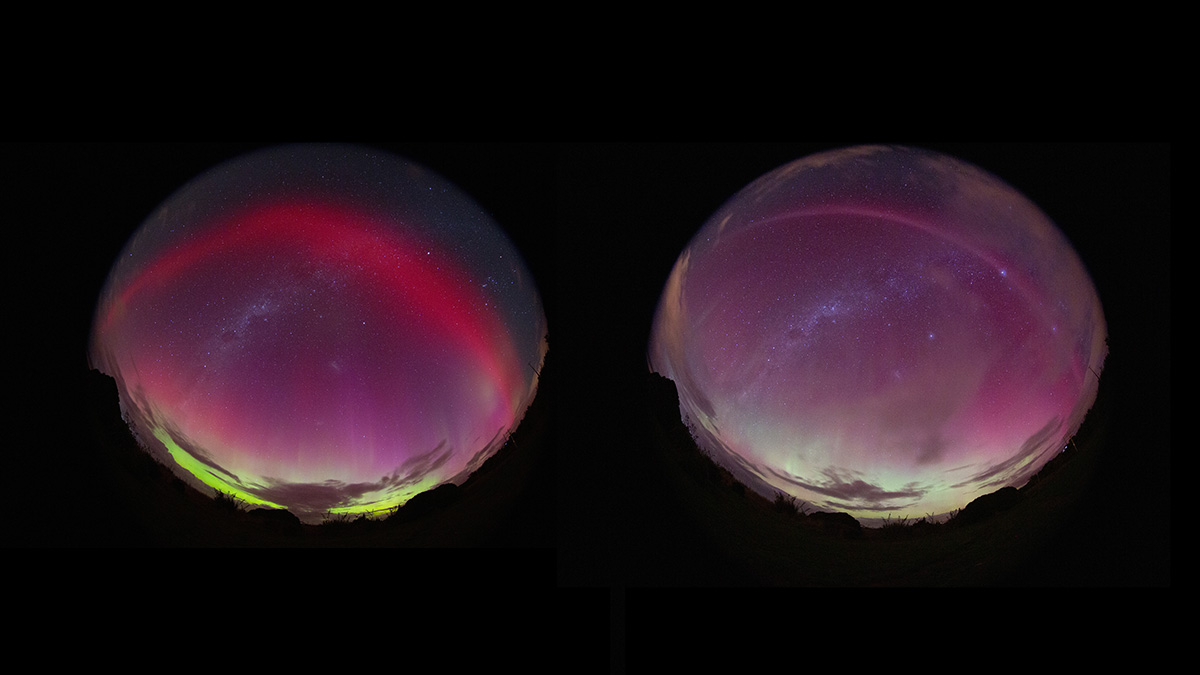Source: Geophysical Research Letters
Stable auroral red (SAR) arcs and strong thermal emission velocity enhancement (STEVE) phenomena are optical structures that have been detected in the subauroral upper atmosphere. Whereas aurorae are created by energetic particles raining down from above, SAR arcs and STEVE phenomena are generated by extreme thermal and kinetic energy in Earth’s atmosphere.
The two optical structures differ from each other in terms of spectra, size, and duration. The structure and occurrence of SAR arcs are better understood than those of STEVE, and although they are known to happen in the same region, whether or not SAR arcs can change into instances of STEVE had not been documented.
On 17 March 2015, that changed. In a new study about that event, Martinis et al. report on a SAR arc that evolved into a STEVE phenomenon during a geomagnetic storm. At 09:27 UT, A SAR arc was observed from New Zealand, running east to west, shining brighter than previously reported arcs. Images of the optical structure were captured by amateur photographers as well as an all-sky imager at the Mount John Observatory. According to the observatory’s information, the SAR arc reached a brightness of about 6 kilorayleighs, 10 times brighter than a typical SAR arc and similar to visible red aurorae. The researchers made sense of the images and geolocation of the structure by assigning each pixel a coordinate; they deduced that the emission height reached around 425 kilometers (264 miles).
Martinis and colleagues also analyzed data from the European Space Agency’s Swarm B satellite and found that the SAR arc’s characteristics were associated with strong ion drifts and high electron temperature. Over the next 30 minutes, these conditions became stronger as the structure eventually morphed into a STEVE—a thin, white-mauve arc.
According to the authors, this is the first reported instance of a SAR arc transitioning into a STEVE. Scientists look forward to future missions with instruments that can gather data from such extreme events as well as deciphering the mechanisms that form these subauroral phenomena to begin with. (Geophysical Research Letters, https://doi.org/10.1029/2022GL098511, 2022)
—Alexandra K. Scammell, Associate Editor

